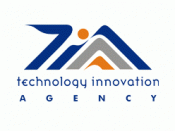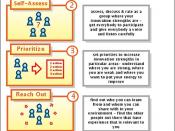Introduction:
Innovation is about coping with change, "which can take two forms - in the things which an organization offers, and change in the way in which they are created and delivered" (Tidd, 2001). As international competition intensifies and product life cycles shorten, the pressure to innovate heightens.
Talking about innovation, there are usually two levels at which innovation take place: the inter-firm level and intra-firm level. Innovation that takes place at the inter-firm level is about the external factors which influence the firm's innovation attitude and behavior. The latter is about the innovation process within an organization. It is always concerned with the implementation of innovation.
This paper consists of two separated parts. Part one is using the selected "diamand model" of Korean MEI cluster, to discuss the roles played by competitiveness and technology in shaping the scope of innovation. Part two is talking about the innovation process within an organization through the analysis of innovation climate in Microsoft Inc.
Part one: Innovation Within a Cluster
The new literature has come increasingly to examine not only the innovation process within a firm but also inter-firm linkages and structures of the public and private sector context within which innovation flourishes or can be persuaded to flourish.
Governments as well as firms must engage in a continuous process of learning and innovation to build and sustain competitiveness under conditions of dynamic industrial change. Industrial policy and technological development are linked via the concepts of innovation and competitiveness and the relationship between them.
Diamond model:
The cluster concept, created by Michael Porter, is a way of analysing the sources of international competitiveness of industries by understanding how a nation's attributes, both individually and as a system, constitute a 'diamond' of competitive advantage. The attributes are:
a) Factor conditions - e.g. high level...



Opinion
A good one having useful data in it too.
0 out of 0 people found this comment useful.